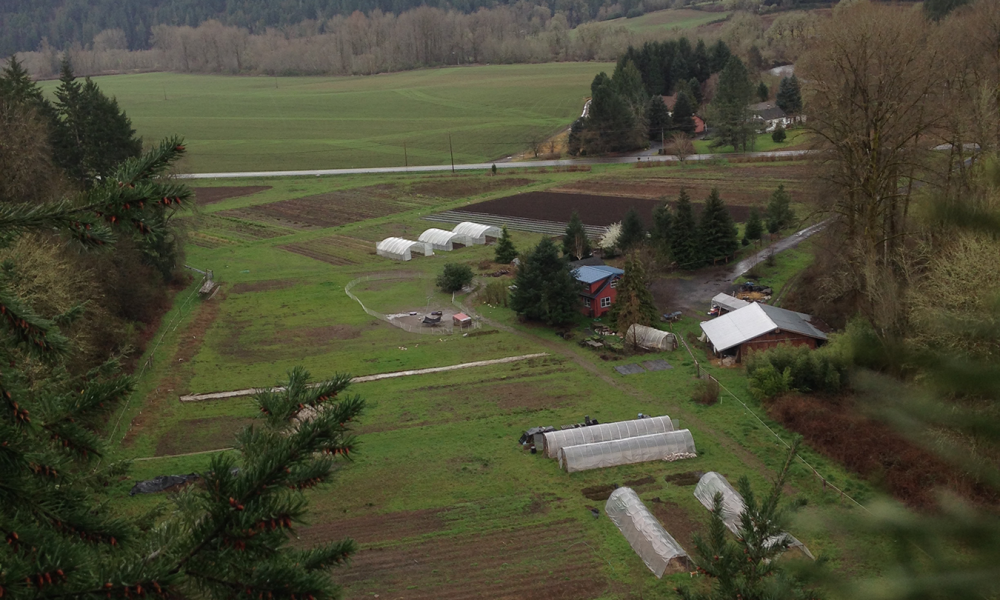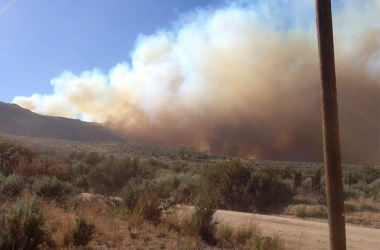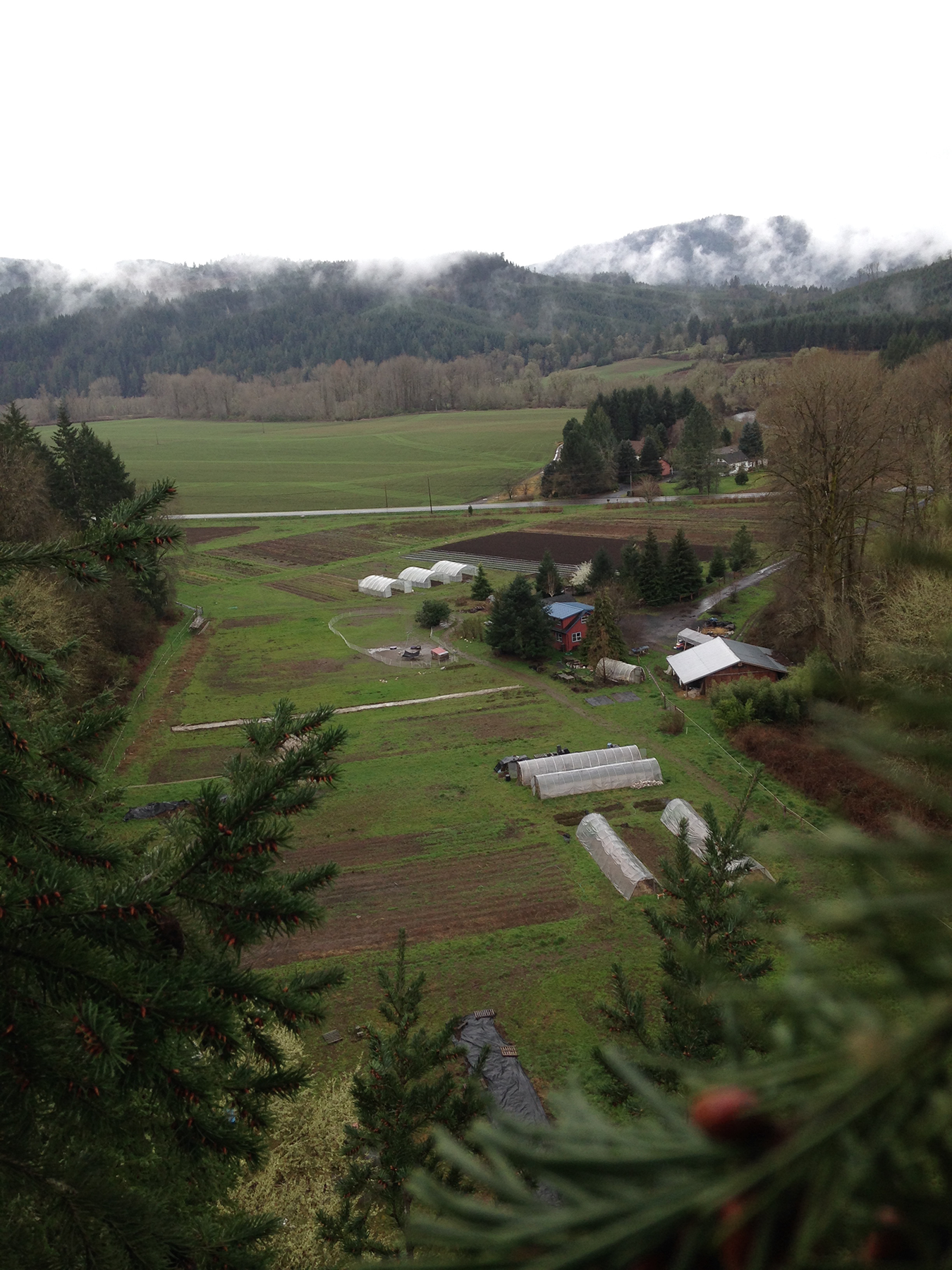 Photo by Max LaMonte. Picture is taken from the tallest tree on our hillside.
Photo by Max LaMonte. Picture is taken from the tallest tree on our hillside.
Waiting for Tomatoes
Our tomato patch is right outside the kitchen window this year. Almost every plant is growing robustly, and some are ridiculously robust. Everyone on our crew has 20 – 40 tomato plants to take care of; that means pruning, tying them up as they grow (or coaxing the cherry tomatoes to stay inside the cages) and recording the date of the first one to ripen. Here are the varieties with at least one ripe tomato by the end of July: Victoria, Afghan, Galina, Pocket Star (which turned out not to be green and speckled, but rather a dusky pink), Black Plum, San Marzano Nano, Blue Zebra, Harvest Luck, Striped Roman, Sun Gold, Pink Princess, Stupice, and Piccolo San Marzano. That’s thirteen or about a fourth of our 55 varieties. All of the others have full-size tomatoes, some of which are starting to how a little color. We have eaten most of the ripe ones and taken a few to our markets. I am eagerly anticipating the time, starting about two weeks from now and lasting until about the end of September when tomatoes are in such crazy abundance that we hardly know what to do with them.
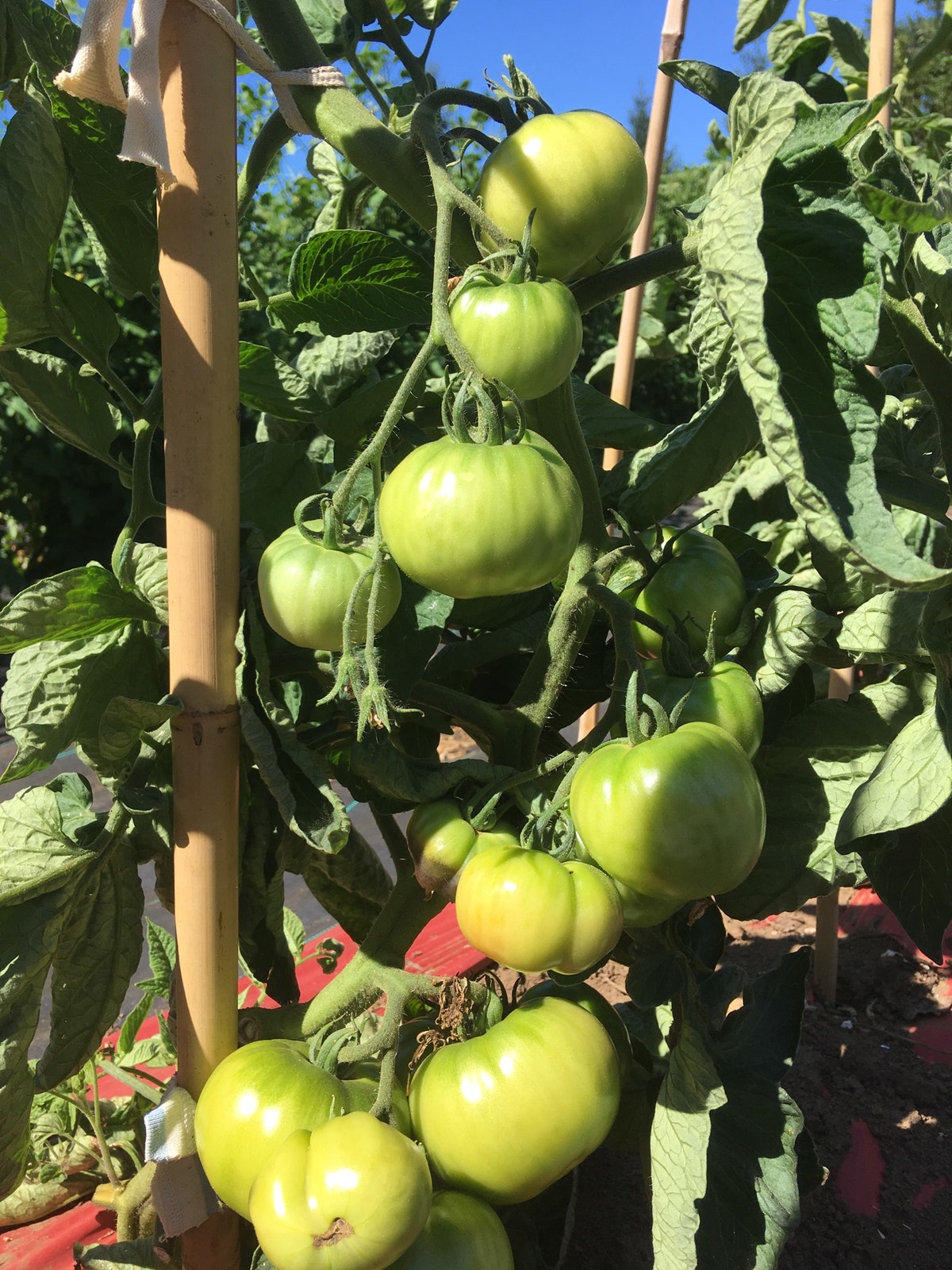 Green Victoria tomatoes
Green Victoria tomatoes
Garlic
Garlic was almost the first crop we planted when we started farming in the fall of 1999. We have about 20 varieties. Mostly, we save and replant the best of our garlic. Occasionally, we add a new variety, usually a gift. Every variety has its own distinctive flavors and qualities.
We harvested our garlic the first week of July, sorted it by size and hung it in bunches under the eaves of the barn, where it is protected from rain and sun, but gets plenty of breeze. After 3-4 weeks of curing, we cut off the stems, clean it up, and offer it for sale.
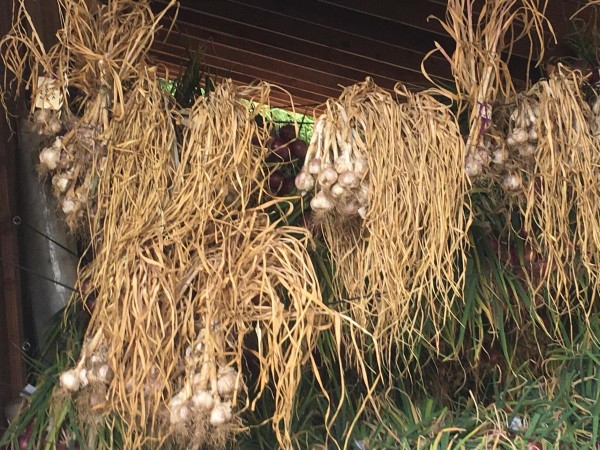 Garlic hanging to cure
Garlic hanging to cure
Garlic should be stored at room temperature in a dry airy spot away from direct sunlight. A hanging basket in your kitchen is good, as long as it is away from moisture from the sink and the stove. Don’t try to store it in a basement. Never put it into the refrigerator.
A cooking tip to try: Garlic will add the most flavor if it is added to your dish about 10 minutes before the end of cooking. Chop it up about 15 minutes before that and let it breathe before it goes into the dish.
Time to Plant for Fall and Winter Harvest
In our area are so fortunate to be able to grow and harvest delicious fresh vegetables from our own farms and gardens through the fall and winter and into spring.
Plants that can survive in spite of frost and freezing weather are called hardy plants Many of our favorite vegetables come from hardy plants: lettuce, onions, cabbage, kale, collards, broccoli, spinach, beets, chicories, carrots, and many herbs. Each of these has a point where the cold will kill them, but most of them do well in one of our typical winters. All green plants have one main job: turning sunlight into food – food for the plant, food for its animal neighbors, and food for humans. Since there is less sunlight in fall and winter than at the height of summer, growth, the production of food is slower in the colder months. Growth may slow to a crawl or stop entirely although the plant continues to survive. We have found that kale, for example, will produce new leaves until mid-November. After that, the existing leaves are good to harvest, but they will not be replaced by new growth until the lengthening days of February wake the plant up and it starts to grow again.
Kale and collards give us a final gift in the spring: they produce flower buds that look like tiny broccoli. We call it broccolini; it’s also called raab or rapini. Typically, there is a main shoot and when it is picked, side shoots appear. After several rounds, when the shoots are too small to be worth picking, it’s time to pull the plant.
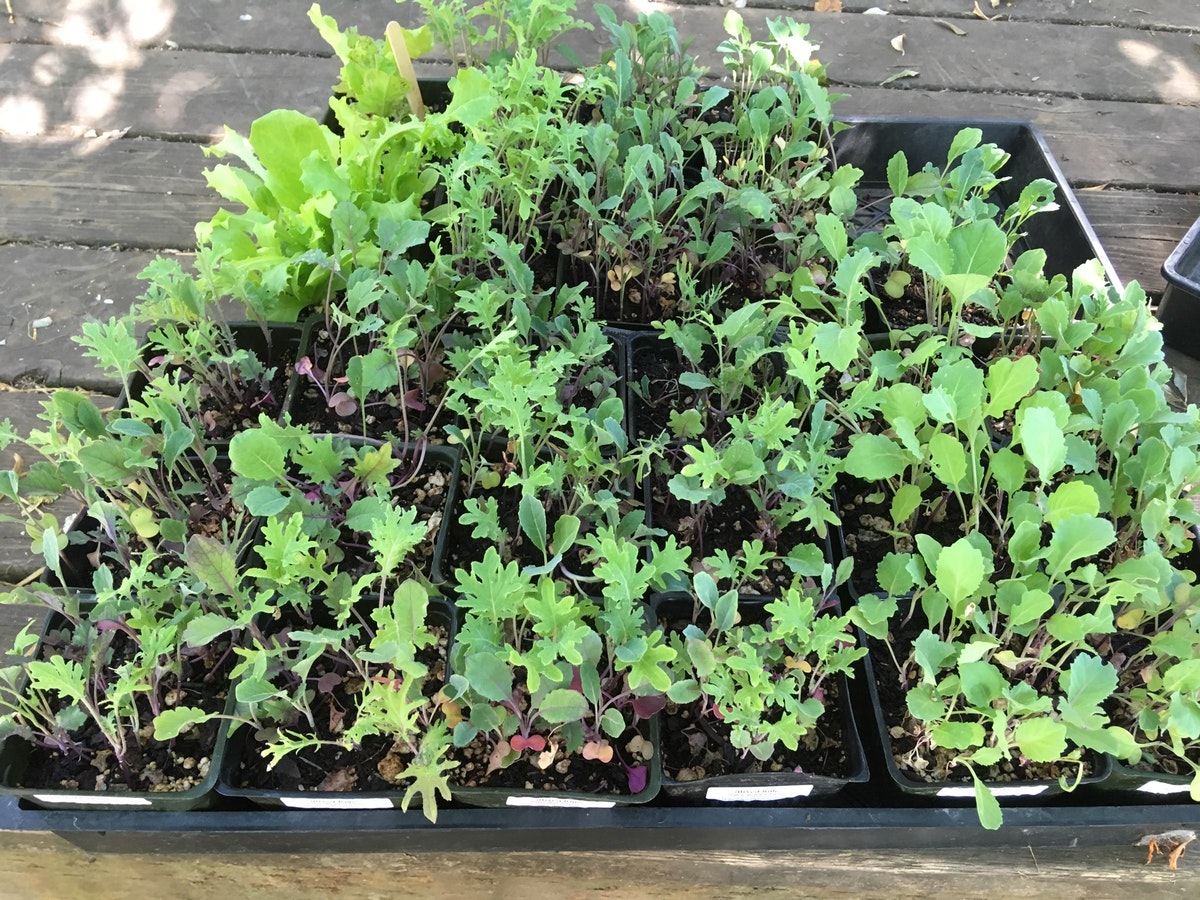 Seedlings for fall and winter
Seedlings for fall and winter
Timing of planting is crucial for success with fall and winter vegetables. Early to mid-August is the time to transplant cabbage, collards, and kale. Turnips, lettuce, and spinach can be transplanted until the middle of September. Other fall and winter crops can be seeded direct, each at its own appropriate time
If you want complete information on growing fall and winter vegetables, we recommend Binda Colebrook’s book Winter Gardening in the Pacific Northwest.
Prepare a weed-free spot in your garden; it could be where the lettuce has bolted or where onions or garlic have been harvested. It is better not to plant the same family in the same place without an interval, so don’t plant cabbage where the broccoli has been. early October, you should have collards and kale leaves big enough to harvest (although if you wait longer, they will be bigger).. Cabbage will take longer. Weeds and most pests are barely an issue with fall and winter gardening. The exception is slugs. I will write about how we control slugs in a later column – after it starts to rain and they become pesky again.

